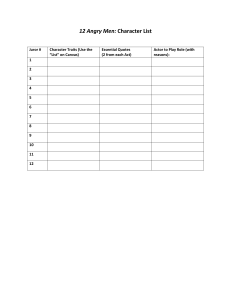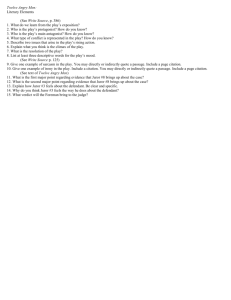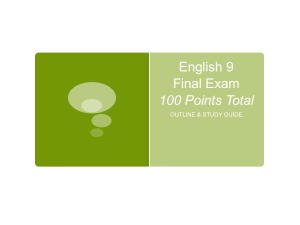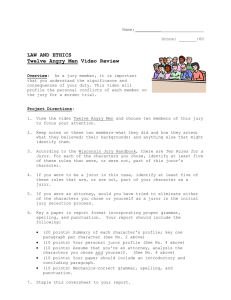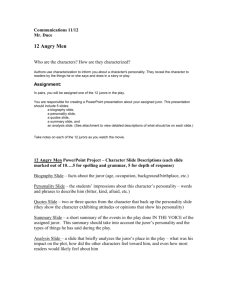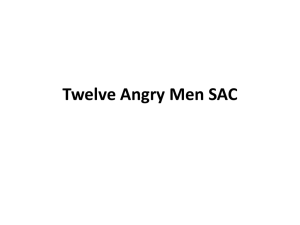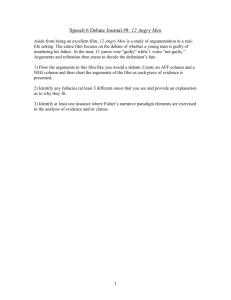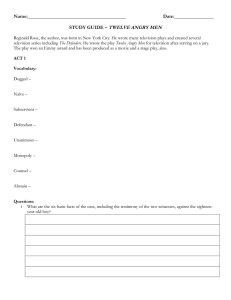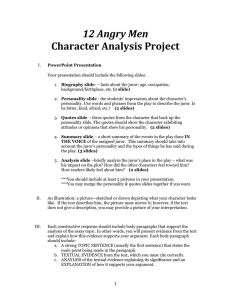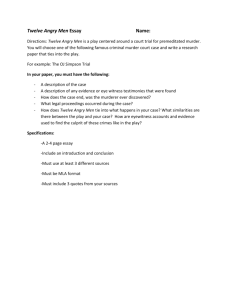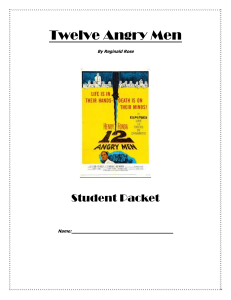Study Guide for Twelve Angry Men – Test on 10/17 Themes:
advertisement
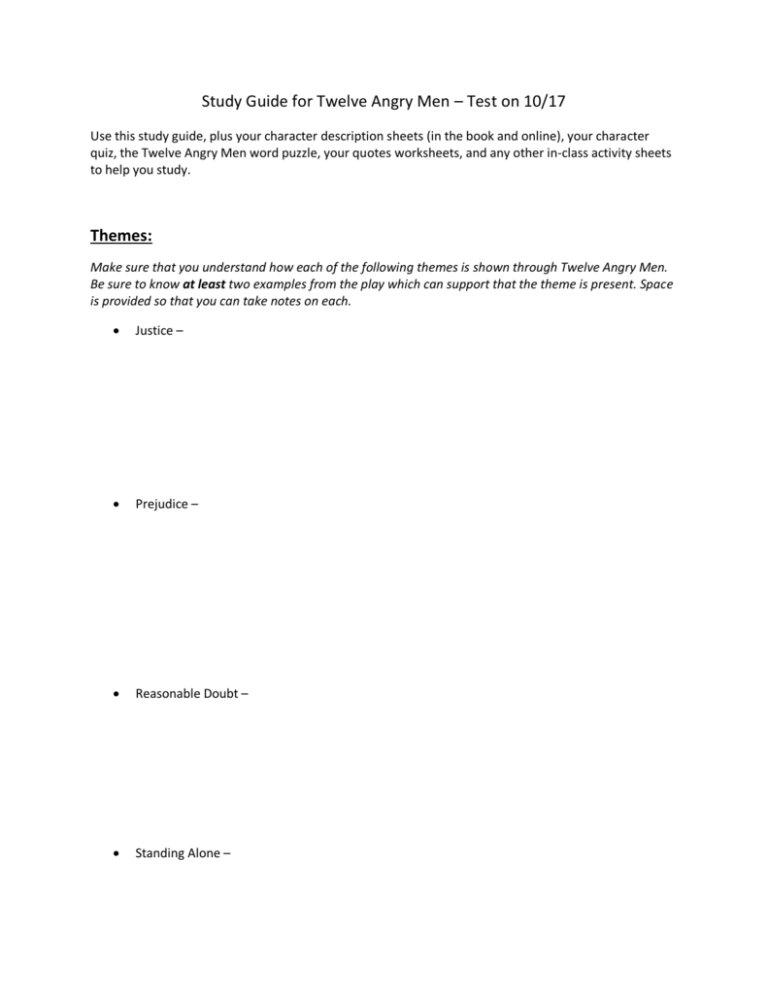
Study Guide for Twelve Angry Men – Test on 10/17 Use this study guide, plus your character description sheets (in the book and online), your character quiz, the Twelve Angry Men word puzzle, your quotes worksheets, and any other in-class activity sheets to help you study. Themes: Make sure that you understand how each of the following themes is shown through Twelve Angry Men. Be sure to know at least two examples from the play which can support that the theme is present. Space is provided so that you can take notes on each. Justice – Prejudice – Reasonable Doubt – Standing Alone – Characters: Use your character sheets (in the book, available under classroom handouts, and from your “Tea Party” activity sheet), the jeopardy review game from the quiz, and any character assignments. Be sure to know: The order of when characters change their vote to “not guilty” – ESPECIALLY those who change first, second, and last. The attitudes of each character about the case – Pay attention to racist attitudes, characters which Understand each character fully, but focus your studying on the following KEY characters in the power struggle and decision making. o Juror 3 o Juror 4 o Juror 5 o Juror 8 o Juror 9 o Juror 10 Quotes: Understand both the quotes on your Twelve Angry Men Quotes Worksheet, as well as the significance of the following quotes from the text. Remember to study who said it and why it is important to the play. “You don’t really mean you’ll kill me, do you?” “It takes a great deal of courage to stand alone.” “I’ll kill him!” “He don’t even speak good English.” Plot: Understand significant plot events, such as who switched sides and when. Also, focus on when and how evidence in the case is disputed, such as: Why the women across the street’s testimony could have been invalid (THINK – Seeing!) Why the old man’s testimony about hearing the murder happen and seeing the boy run downstairs could have been invalid (THINK – Moving and Hearing!) Why the murder weapon may not have been the boy’s (THINK – Buying and Stabbing!) Why the stab wounds may not have been made by the boy (THINK – Past Fighting!) Why the boy’s story about going to the movies may have been true (THINK – Losing!)
